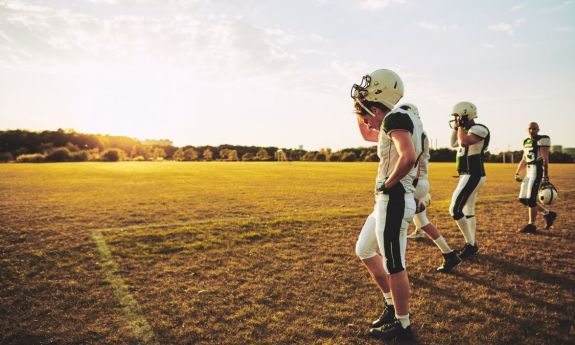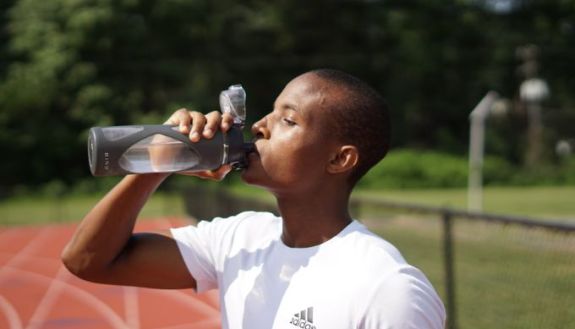Protecting High School Athletes During Summer Heat
High school sports need game plan for heat, Duke expert says

This means starting athletes at a much-reduced level of exertion -- around 20 percent of what would be their maximum effort at the end of last season -- and slowly ramping up over about two weeks. This gradual approach gives athletes' bodies time to adapt to exercising in hot conditions, reducing the risk of heat-related illnesses in full-intensity practices.”
Jordan Clark
A program of the Nicholas Institute for Energy, Environment & Sustainability, the Heat Policy Innovation Hub last year created a policy manual outlining the steps high school athletic associations should take to safeguard the health and well-being of student-athletes during severe heat. However, there are considerable disparities in resources and policies related to heat mitigation across states.
“Heat safety isn't a one-size-fits-all proposition,” Clark said. “From the football field to the indoor gym, each venue presents unique challenges. Our policies need to reflect that complexity to truly protect all students.
“When it comes to heat safety, prevention is far less costly than treatment. Investing in proper equipment and protocols now can save lives and prevent life-altering heat illnesses later.”
Symptoms of heat stroke include hot dry skin, confusion, loss of consciousness, fast pulse and a body temperature of 103 degrees.
Clark said implementing robust environmental heat measurements, thorough activity modification guidelines, and venue-specific heat action plans across all sports and venues will significantly reduce heat-related illnesses. While the recommendations primarily target high school athletics, these principles can also be applied to other youth physical activities such as camps and park activities.
“On-site monitoring is the difference between guessing and knowing when it comes to heat safety for student-athletes. We recommend using wet bulb globe temperature, which accounts for multiple factors beyond just temperature and humidity, including wind speed and solar radiation.”
“As practices for fall sports begin, it's critical that schools implement a gradual heat acclimatization period. This means starting athletes at a much-reduced level of exertion -- around 20 percent of what would be their maximum effort at the end of last season -- and slowly ramping up over about two weeks. This gradual approach gives athletes' bodies time to adapt to exercising in hot conditions, reducing the risk of heat-related illnesses in full-intensity practices.”
“Finally, smart heat safety means matching practice intensity to game reality. Linemen shouldn’t run long distances in the heat when their game never demands it. Every position in every sport has unique physical demands. Tailoring an approach to these specific needs not only reduces unnecessary heat risks but also prepares athletes more effectively for actual competition.”
TREATING A HEAT STROKE
If an athlete is showing the symptoms of heat stroke, treatment should begin immediately at the practice site, Jordan Clark said.
“For suspected heat stroke, remember: cool first, transport second,” Clark said. “Immediate on-site cooling, specifically cold-water immersion, can be life-saving. Delaying this critical step until hospital arrival significantly increases the likelihood of severe, life-altering consequences. Rapid cooling is crucial for surviving exertional heat stroke.”
RELATED STORIES




